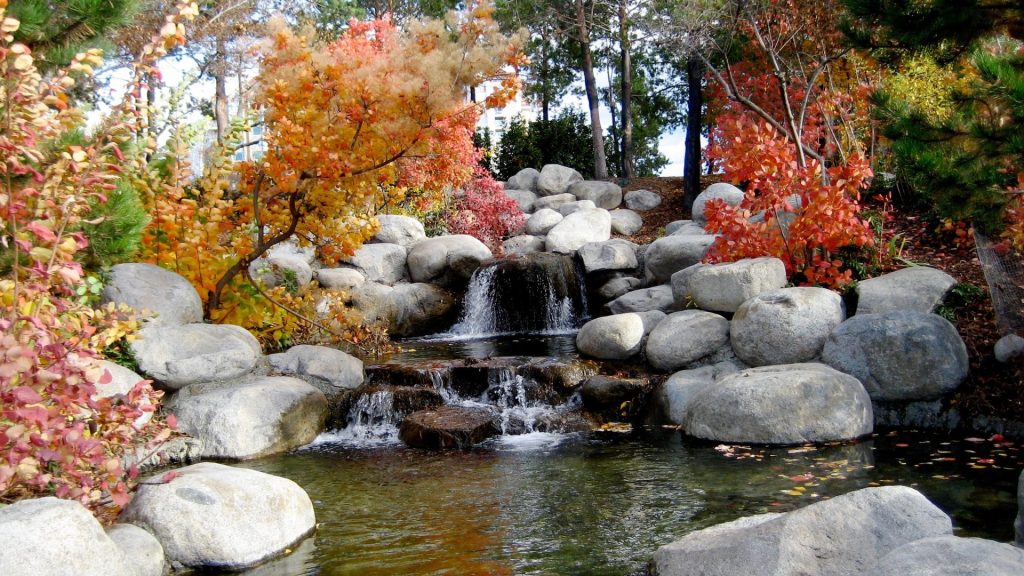
Fall and winter are crucial times for the pondkeeper. As tropical plants begin to die and leaves from surrounding trees begin to fall, the pond accumulates nitrogenous waste material that adversely affects water quality and creates ideal conditions for preventable disease and parasite problems come springtime.
The following routine maintenance should be performed before the water temperature stabilizes at 50°-55°F:
• Cover the pond with a net while leaves are falling.
• Drain 2/3 of the pond water, removing all the sludge and debris from the bottom of the pond and scrubbing algae off the liner.
• Cut back approximately 80% of the growth of live plants, particularly those with leaves under the surface.
• Remove any tender plants that won’t survive freezing weather.
• Cut back flowers, eaves and shoots of water lilies. Transplant and separate as required (this is an ideal opportunity to begin using Soiless Potting Media). Submerse the lilies in the deepest part of the pond.
• As most of the natural cover for the fish has been removed, provide them with shelter from predators. Sections of inert drain pipe and/or PVC pipe work well.
• Refill the pond, being sure to use a dechlorinator.
• Thoroughly clean the filter and any pump pre-filters.
• If they are to be left running, raise pumps off the bottom of the pond so that the warmer, denser water that accumulates there is left undisturbed.
• Restore a 3% salt solution to the pond water by adding 1 lb. of pond salt for every 100 gallons of water every 24 hours for three treatments (a total of 3 lbs. per 100 gallons). This will prevent fall and winter deaths caused by Costia, a parasite capable of surviving very cold temperatures and the number one killer of fish during the fall and winter seasons.
• Fatten the fish, providing them with an adequate supply of stored nutrients to survive the winter months. Feed as many times a day as your schedule will permit, ensuring that all the food being offered is eaten with 5-10 minutes. Use a high-protein food.
• Discontinue feeding entirely when the water temperature is consistently below 50°F. Regardless how tempting it may be to feed on the occasional balmy day, DO NOT feed your fish! At a water temperature of 50°F or less, digestive activity has ceased and this food will rot in the fishes’ intestines causing illness and probable death.
A pond which is properly prepared for winter will avoid many of the problems associated with the arrival of spring!
